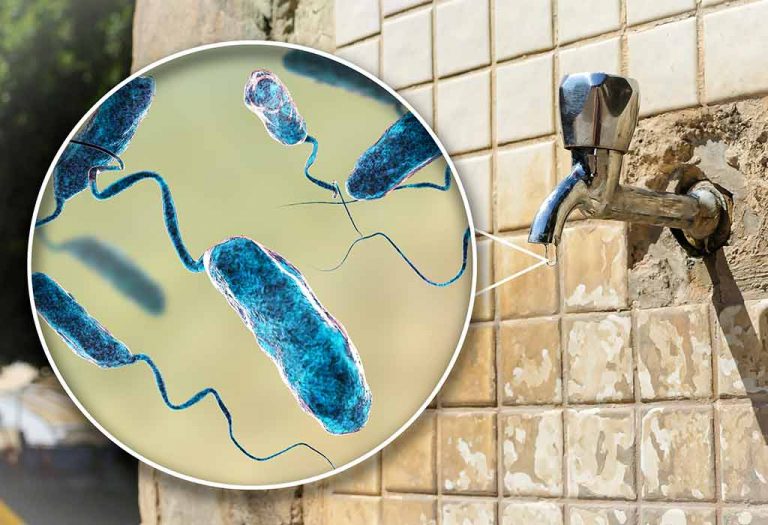Your Baby’s First Cry: Why Do Babies Cry When Born?

The moment your little one emerges out of your body into the real world, everyone in the room, including the doctors, nurses and yourself, are fixated on the baby and waiting for him to make his presence felt. The first cry of the baby is something that signifies his entry into the world. But do all babies cry at birth? Do they continue to keep crying or they cry just for a few minutes and then go silent? What does each cry signify? Why do babies cry when born? These and many other questions are all necessary for understanding the healthy nature of a baby.
Why Do Babies Cry After Birth?
A baby crying after birth is considered an ideal situation and with good reason. Once the child is born, doctors usually will work towards using a suction tube to clean out any residual fluid in the baby’s nose and mouth. This allows the bodily systems to be triggered and stimulate a cry. At times, this is done by the baby himself and the lungs kick into action to cry out loud, which also draws in the first breath of his life.
Why is Birth Cry Important?
As you progress in your motherhood, the incessant crying of your baby might leave you irritated to no end. But the first cry is always the most joyous moment of a mother’s life. This assures the doctor as well that your baby has ticked one of the most important signs for survival.
For the entire duration of pregnancy, the baby is supplied the necessary oxygen directly inside the womb via the placenta. In the development of the baby’s body, the lungs are pretty much the last organs to be matured. Furthermore, since the child is fully covered with amniotic fluid in the sac, there is no point in using the lungs for breathing. This is why all the nutrition and oxygen supply reaches the body directly via the umbilical cord and the placenta.
It is primarily due to this biological structure that most doctors will clamp your child’s placenta the moment he is born. Once the baby’s body senses that there is no supply of oxygen from the previous source, it will start stimulating the lungs to begin functioning, and this manifests in the form of a cry as the baby literally asks for its first breath.
Does Baby’s First Cry Help in Breathing?
Very much so. The lungs don’t mature until quite late in the pregnancy and, even after that, they do not have any function as such. When labour sets in, the fluid starts drying up and this begins to allow the lungs to start doing their function. They begin expanding and contracting gently. However, small amounts of fluid and mucus do remain present inside the lungs, in the airways, in the nostrils and even the mouth. This needs to be expelled and the pathways cleared for breathing to take place. The cry is an effort to push them all out, which is why the first cry is usually accompanied by a gurgle and then gets stronger as the air starts being taken in easily.
What Happens If Babies Do Not Cry After Birth Immediately
Doctors have experienced multiple scenarios of a baby not crying after birth. But when you see it for yourself, it could be quite shocking because that would mean that your baby is not breathing.
A cry is a sign that shows that the lungs of your baby are fit for breathing. If your baby doesn’t start crying immediately, it isn’t necessarily a cause for worry. Many babies are born healthy, in pink and quite alert with limb movements and all, and might begin to cry a few minutes later. Doctors have a good idea about this and do take additional measures if the baby’s colour is not healthy pink and shows signs of a struggle. The suction pump is used quickly to clear pathways of any obstacles. The classic method of spanking the baby is used as a last resort to cause it some pain and make it cry out loud, although many doctors do opt for massaging the baby as well. If all of these methods fail, too, then the baby is shifted to the ICU and artificial tubes are used to supply oxygen to the body.
How Doctors Encourage Baby’s Cry After Birth?
For doctors and mothers alike, the first cry is always the strongest and reassuring sign of the ability to breathe well. Therefore, if the baby does not start crying within the first few minutes of delivery, extensive measures are taken to make sure that the baby does begin to do so.
Earlier, many doctors would hold the baby upside down firmly around his legs and then slap the butt gently. This not only causes slight pain to the child, but the motion also helps loosen any residues that might be obstructing the airways. Constantly doing so can irritate the child enough to begin crying.
Most people began looking at it as a barbarian practice and inhuman to the delicate baby. Doctors would usually take a lot of care in ensuring the child is not harmed and they would be quite experienced in handling them. Off late, in modern times, those methods are rarely used. With technologies available to control the situation, the source of the problem is handled directly.
Since the major issue with the absence of crying is the obstructions present in the nose or the mouth or even inside the lungs, assistance is provided to the baby’s efforts with the help of a suction pump. The pressure applied by the pump pulls out any residues in the pathways or loosens them enough to let them be thrown out by the lungs contractions. This can bring out a cry quite easily. Another technique that is smartly done is by making use of a towel. The texture of the towel is quite rough for the baby’s sensitive skin, especially when it has been comfortable in the amniotic fluid all this while. This irritating sensation of a coarse surface rubbing against the smooth skin can be enough to stimulate a reaction from the baby, and he might begin to cry due to it.
A crying baby is the mother’s greatest assurance that the delivery has been successful and it causes immense pleasure and relaxation at the same time. Most natural deliveries take care of it since the baby already begins to experience the discomfort as it passes through the birth canal. In cesarean deliveries, the doctors provide the stimulus by using a suction pump.
FAQs
1. How long after birth should you expect your baby to cry?
Most newborns cry within the first few minutes after birth. This immediate crying is a natural response to the new environment and is essential for helping the baby take their first breaths. If a baby doesn’t cry right away, medical staff will monitor and assist as necessary to ensure they begin breathing effectively. Typically, if there are no complications, you can expect the first cry to happen within the first minute after delivery.
2. Can the sound of the first cry indicate the health of the baby?
The sound of a baby’s first cry can provide some information about their health, but it is not the sole indicator. A strong, vigorous cry is a positive sign, but medical professionals will also look at other factors like skin color, heart rate, and muscle tone to assess a newborn’s health. These factors are collectively evaluated using the Apgar score at 1 and 5 minutes after birth to provide a more comprehensive overview of the baby’s condition.
3. Do all babies cry when born?
Wondering – do all babies cry when born? Not all babies cry the moment they are born. While many babies do cry immediately as their respiratory systems engage and they adapt to the new environment outside the womb, some might not cry right away. The absence of immediate crying doesn’t always indicate a problem; it can be influenced by the type of birth, the use of medications during labor, or simply the baby’s temperament.
We hope we’ve answered your question – why do newborns cry at birth? No matter what the type of delivery is, it is important to not be worried if your baby doesn’t start wailing the moment it emerges. It is best to assure yourself that the doctors and medical personnel around are quite experienced and well-equipped to make your baby cry or take corrective action in ensuring its well-being. Within no time, you will have the bundle of joy in your arms, either wailing out loud for food or cooing softly and sleeping in the warmth of your presence. Be prepared for nights filled with cries thereafter.
References/Resources:
1. Lakshminrusimha. S, Jobe. A; Baby’s First Cries and Establishment of Gas Exchange in the Lung (American Journal of Respiratory and Critical Care Medicine); National Library of Medicine; https://www.ncbi.nlm.nih.gov/pmc/articles/PMC8437117/; July 2021
2. Takeuchi. Y, Nomura. A, Yamoto. M, Ohfuji. S, et. al.; The Association between the First Cry and Clinical Outcomes in CDH Neonates: A Retrospective Study; MDPI; https://www.mdpi.com/2227-9067/10/7/1145; June 2023
3. Kattwinkel. J, Perlman. J, Aziz. K, et. al.; Neonatal Resuscitation: 2010 American Heart Association Guidelines for Cardiopulmonary Resuscitation and Emergency Cardiovascular Care; AHA Journals Circulation; https://www.ahajournals.org/doi/10.1161/circulationaha.110.971119
4. Makoi. Z, Takacs. G; Analysis of the First Cry of the Newborns in Case of Vaginal Delivery and Caesarean Section (IFAC Proceedings Volumes); Science Direct; https://www.sciencedirect.com/science/article/pii/S1474667016321450
5. Hämmerle. U; The baby’s first cry after birth; Osteopathic Research; https://www.osteopathicresearch.org/files/original/c19ccb2fd4a3129986e0fc4b65b23c956e737f97.pdf
6. Pius. K; Discussing the “First Cry” as an Initial Assessment for Neonates; Research Gate; https://www.researchgate.net/publication/342819732_Discussing_the_First_Cry_as_an_Initial_Assessment_for_Neonates; February 2020
7. Manen. M; The First Cry of the Child; Sage Journals; https://journals.sagepub.com/doi/abs/10.1177/1049732316673342; October 2016
Also Read:
Newborn Umbilical Cord Care
Newborn Baby Care Tips For Parents
Is It Okay To Let Your Baby Keep Crying?
Newborn Vaccination In The First 24 Hours
Newborn Baby Care Immediately after Birth
Different Baby Cries and What Does They Mean
Was This Article Helpful?
Parenting is a huge responsibility, for you as a caregiver, but also for us as a parenting content platform. We understand that and take our responsibility of creating credible content seriously. FirstCry Parenting articles are written and published only after extensive research using factually sound references to deliver quality content that is accurate, validated by experts, and completely reliable. To understand how we go about creating content that is credible, read our editorial policy here.
























